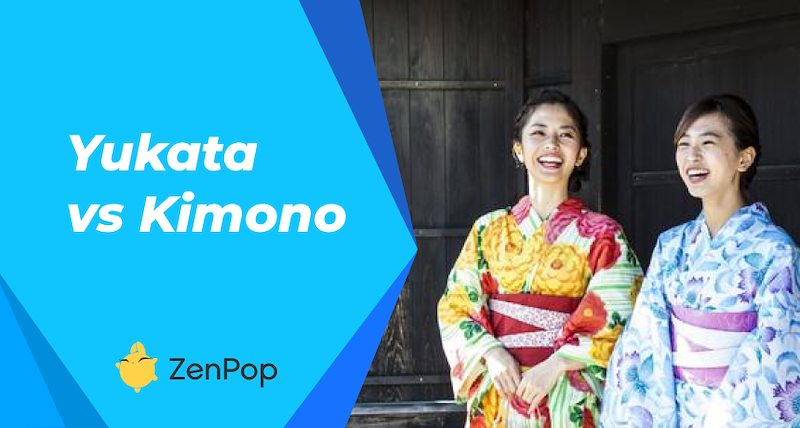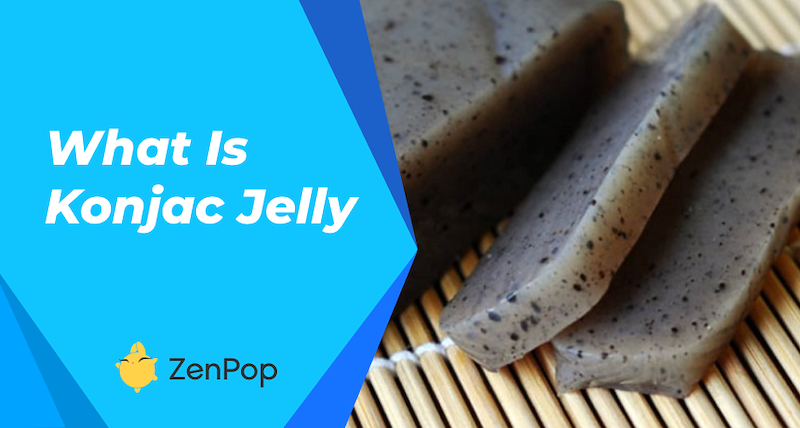
</title><meta name="robots" content="noindex">What is Konjac Jelly?
Konjac jelly, also known as konnyaku, is a processed food made from part of the konjac plant, specifically the bulb. Konjac is a perennial root vegetable plant cultivated in various parts of Asia. However, wild forms of the plant can be found mainly in China and Southeast Asia. The Konjaku plant is highly medicinal, rich in fiber and low in calories which makes it perfect for creating meals for healthy weight loss. In Japan, this plant is often prepared and eaten in various ways, the most popular being in the Konjac jelly form.
The jelly itself is made from the powdered form of the starchy root of the konjac plant. It is then mixed with water and allowed to solidify until it gains a rubbery texture, and the color of the jelly is generally translucent. Still, it could change depending on the other ingredients that might be added to it. In this article, you will learn all about how the Japanese make use of Konjac Jelly. So jelly up!
What is Konjac Jelly?
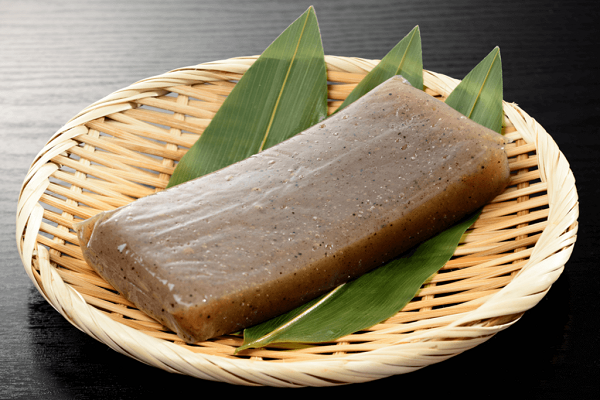
The starchy konjac plant, which is related to the taro and the yam, is used to make konjac jelly, also referred to as konnyaku. The konjac plant is also known as the devil's tongue and the elephant foot yam. The plant has been grown in China for many millennia and is growing in other parts of Asia. Even traditional Chinese medicine uses it, and in the sixth century, it was introduced as a food remedy to Japan.
When water and a gelling agent are added to konjac powder from the root, the mixture solidifies into a stiff, rubbery cake. Although much denser, it has a texture that is similar to gelatin. The presence of hijiki (seaweed), which gives jelly its distinctive dark greyish color, or the absence of additions, which makes jelly white, usually determines the jelly's color.
The flavor of the konjac jelly itself may be mild or completely tasteless. The jelly lacks flavor, but the bouncy texture will add something distinctive to any dish and enable other sauces or broth to flavor the jelly.
Additionally, konjac flour, which contains glucomannan, is often a better natural substitute for xanthan gum, which is fermented sugar, when it comes to thickening sauces. Why is konjac jelly so advantageous generally? Let's look more closely.
What Does Konjac Jelly Taste Like?
On its own, Konjac jelly is tasteless. There are some people who would even say it has a neutral taste, while others claim it is slightly salty. It doesn’t offer any particular flavor, but that doesn’t undermine its culinary value; in fact, this makes it perfect as a food additive, and it mixes well with sweets and candies! Konjac powder is actually used to thicken sauces without the fear of it altering their taste.
Although Konjac jelly doesn’t offer any particular taste, it can produce a smell that is fishy and might be a significant turn-off for first-time consumers, but a good rinse would help to avoid this. Alternatively, you can boil the block of konjac in water or soak it in vinegar to get rid of the smell.
Konjac jelly can be incredibly chewy, and it doesn’t dissolve in the mouth, so beware of choking hazards. Make sure to chew extensively and drink lots of water before attempting to swallow, so it is not really the best idea to serve it to young children and old people.
The Health Benefits of Konjac Jelly
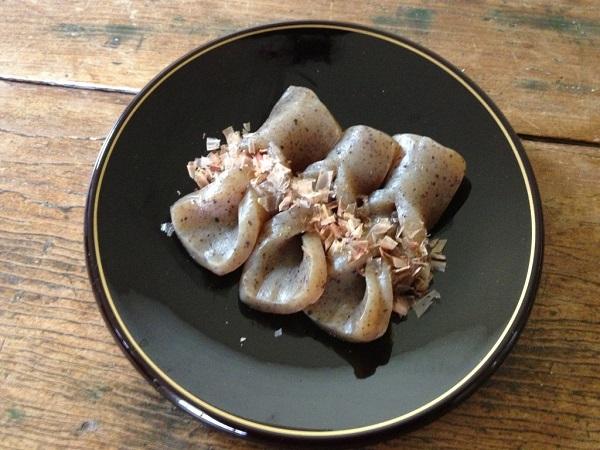
Konjac jelly has a wide range of health advantages, just as the exceptionally nutrient-dense Japanese tofu. Konjac jelly is mostly made up of water in the gelatinous block, and it is quite high in fiber, so eating it fills you up for much longer, and you feel less hungry because of it. That is why it is a great option for people who want to lose weight quickly because it helps with digestion and constipation. As well as boosting metabolism. In addition, the soluble fiber helps to lower cholesterol and blood glucose levels.
It also boosts the body’s immunity. The Konjac plant possesses anti-bacterial properties and antioxidants and is sometimes used in making skincare products as it comes with a healthy dose of collagen and vitamin C. Vitamin C helps to optimize the immune system, and it gives you really healthy skin.
Additionally, it has a very low calorie count while still being very filling. As a result, it is occasionally used as a food for weight loss as well as a dietary supplement. It can also support healthy skin and the bolstering of your immune system.
All in all, it’s a great food to try if you find yourself in Japan. Konjac jelly could offer you tons of variety and health benefits, so don’t miss out on it.
5 Ways to Enjoy Konjac Jelly
Obviously, konjac jelly has multiple applications. Check out the multiple ways to consume this amazing food;
Konjac Jelly and Fruits
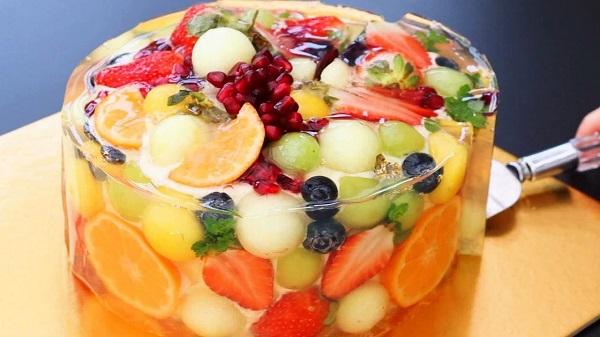
Konjac Jelly can be sliced as blocks and taken with a bowl of diced fruit. Since it is tasteless, it fits right in. It can be mixed with blended fruits and solidified or slices of fruits can be placed inside it before solidification. There are a ton of ways to enjoy it.
Konjac Jelly Juice
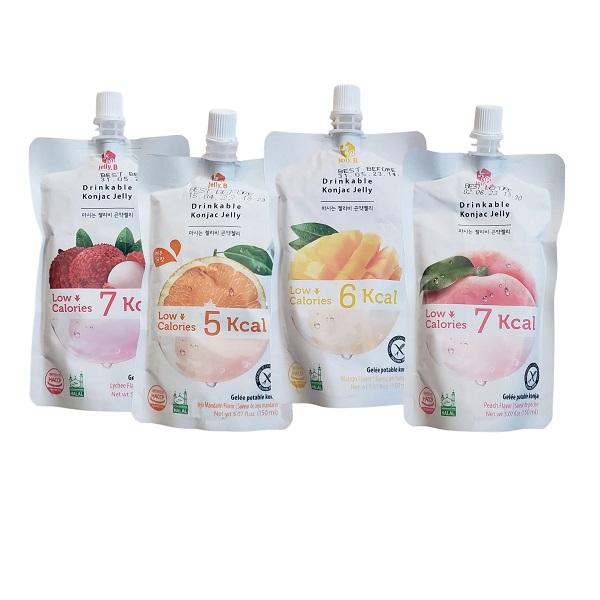
Also, Drinkable beverages have been made from Konjac jelly. The juice is often mixed with fruits as well, and it possesses a thick consistency due to its jelly-like texture. Certain reviews claim it is the ultimate diet version of apple juice. It is also quite popular amongst Koreans. Give it a taste!
Cooked Konnyaku
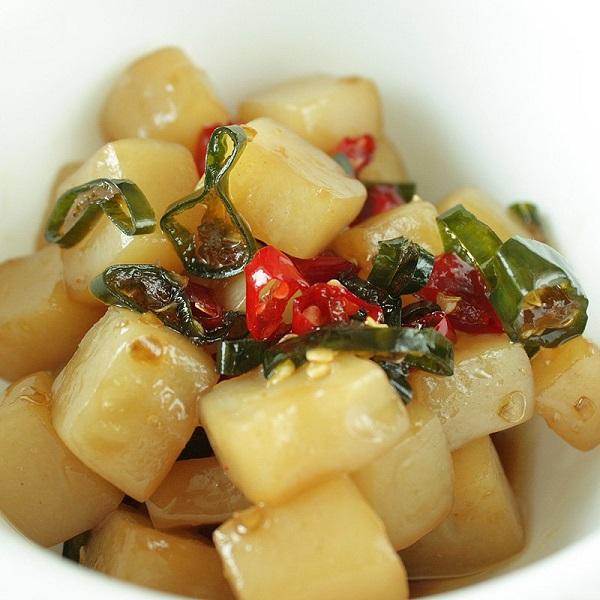
Konjac jelly can be enjoyed with mustard sauce or soy sauce and stir fried in miso. Due to its firm and chewy nature, it can be sliced up like steak and simmered in soy sauce. It doesn’t take too much time to make, and it can require as few as four ingredients, your unagi sauce, honey, small Asian peppers, and konjac block. You can make it extra spicy for that mouth watering taste.
Konjac Jelly in Oden
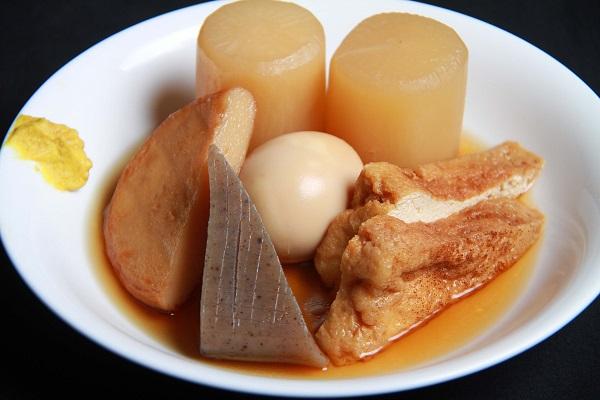
Another easy way to prepare konnyaku is to cut it into smaller pieces and add chunks in soups or hotpots. It is a common ingredient in the Japanese dish known as oden which is a Japanese food consumed during winter festivals to keep you warm and cozy during the cold season. It is made up of more than just konjac. Fish balls, deep-fried tofu seasoned with miso, ganmo, atsuage and other assorted vegetables are added as well.
Itokonnyaku
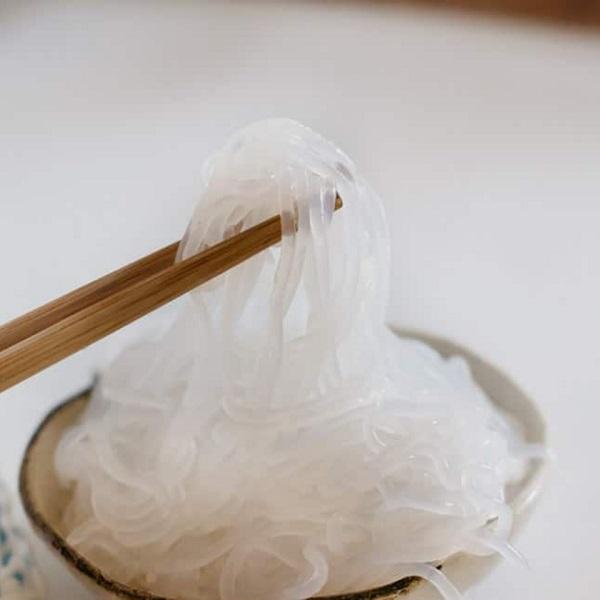
This is a type of Japanese noodle made with konjac jelly. They are often translucent due to the texture and nature of konjac jelly but it is extremely low in calories because it is made with konjac powder and a lot of water (around 90% water). Itokonnyaku is also called shirataki and it can be prepared in different ways. It is also gaining popularity in the United States because of the low calories.
Sashimi Konjac Jelly
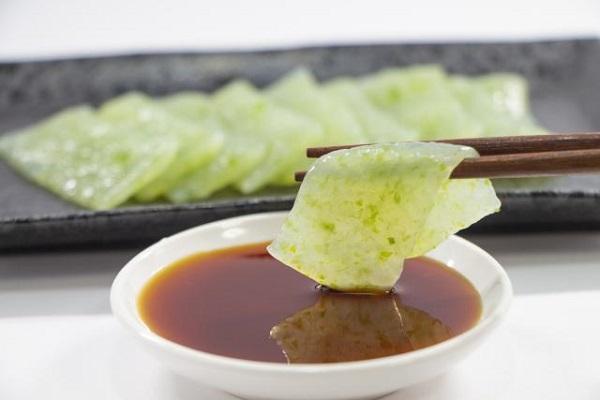
Sashimi konjac jelly is an excellent vegan alternative and quite tasty too. The jelly can be sliced just like sashimi and flavored with citrus. It had a more tender taste, but it was still considerably chewy. The taste can be as refreshing as a salad, but sashimi konjac is arguably more filling.
In Conclusion, you can always be sure to get the best use of healthy plants in Japan. If you want to try out Konjac Jelly drinks or other Japanese snacks, check out our site for mouth watering deals on Japanese snack packs.
This article was originally written by our freelance writer Umm-Kulthum Abdulkareem, and edited by us.


